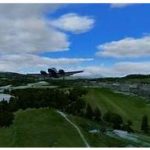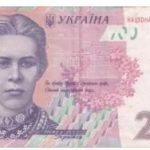ENVIRONMENT
The different succession of plant formations corresponds to the different gradation for climatic bands: from the desert, to N, where the scarce vegetation is dotted with rare oases where the date palm grows, to the bushy and shrubby belt of the sahel characterized by xerophytic plants, to that of the grassy and arborate savannahs to the S, which host a large number of species of acacias and euphorbias, to finally pass to the gallery forest, which constitute the typical vegetation of the river stretches. The fauna of Chad is very rich. In the desert the main animals are the dromedary, used mainly as a means of transport, the Ruppell fox and the fennec, fox-like nocturnal animal, as well as many reptiles and insects. Numerous species of antelope, gazelle and ostrich live in the steppes of the Sahel; but it is above all in the savannahs that the greatest number of species is found: large mammals such as the lion, the leopard, the elephant, the zebra and the hippopotamus, to which the very image of the African continent is linked, are widespread. There are four national parks in the country, of which the most important are that of Zakouma and Manda, in the Sudan region, while protected areas make up 9% of the entire territory. Despite the great variety of animal species, the country has serious environmental problems and the government’s efforts to solve them have always found obstacles in their realization due to the civil war that lasted for about thirty years; an example of this is the progressive desertification of the territory, caused by the increase in drought and the excessive exploitation of the soil that is leading Lake Chad to a slow drying up of its waters. Another problem is the poachingwhich, weakly prosecuted by the authorities, endangered the survival of the white elephant, whose tusks are sold on the ivory market.
ECONOMY
The possibilities of even modest development are still far away for a country which, like Chad, has combined the drama of a civil war with the many geophysical, human and economic difficulties: Chad with a Gross National Product of 8,390 ml. of US $ and a per capita GDP of US $ 862 (2008), it remains one of the poorest states in the world. The difficult economic situation in which the country finds itself is the result of many factors: first of all, the French colonial administration only made few contributions in terms of modernization of cultivation techniques, to which was added the civil war which stopped for over fifteen years. the development of Chad, moreover the internal geographical position and the lack of a developed system of communication routes prevent the development of internal and international traffic, finally, much of the country’s territory is afflicted by adverse climatic conditions (in particular long and repeated periods of drought and consequent desertification). The country was therefore unable to set up any genuine economic program and many regions even suffer from severe food shortages. § Extremely precarious is therefore the existence of a population which, in the absolute majority, is dedicated to a very modest subsistence agriculture, in particular to poor cereal farming, represented almost exclusively by mile and sorghum. The main industrial production is that of cotton: the area destined for this crop reached its maximum extension in 1963, and then decreased following the civil war, reducing by approx. one third. The production of peanuts and rice is becoming important; on the other hand, in the first decade of the 2000s, the production of cassava decreased. § If the North of the country is at risk of desertification, on the contrary the South, thanks to reforestation programs, has seen the area occupied by forests grow from 16% to 25% in thirty years (since 1983).
The breeding has vast spaces and is practiced in the central area of the Sahel and is mainly based on cattle and goats; sheep, camels and poultry are also widespread. § During the seventies of the twentieth century, Chad was positioned among the major fish producers in Africa; still at the beginning of the 21st century, fishing plays a significant role in the poor economy of the country and is carried out in the lake Chad and the Chari and Logone rivers. Most of the product is dried locally: along the shores of Lake Chad and those bordering Cameroon, the surplus of fish is dried, salted and smoked before being sold. According to allcountrylist, the very modest industrial activity is based on the processing of local agricultural and livestock products (oil mills, sugar refineries, cotton mills, tanneries, etc.); it is concentrated above all in the South of the country and in particular in the capital. The state holds majority stakes in all major industrial businesses; limited private holdings are left to the French.
The most important mineral resource is oil: the first field was identified in 1974 in Sédigi, but with the outbreak of the civil war its exploitation decreased and all extraction projects were interrupted; the second deposit was discovered in 1985 in Doba. In 2003, the extraction of crude oil also began in Komé, a refinery was opened and, with funding from the World Bank, created an oil pipeline connecting the fields with Cameroon.
The lack of railways and the limited road network (40,000 km in 2006, of which less than 1,000 asphalted) accentuate the isolation of the various regions and limit trade; international trade takes place mainly through foreign ports; the capital has an international airport. The country has so far been essentially supported by the IMF and France, with whom the absolute majority of international trade also takes place. The trade balance records a chronic passive: exports are represented by cotton, followed by meat, livestock, fish, etc.; imports concern machinery and means of transport, foodstuffs, manufactured goods in general.









